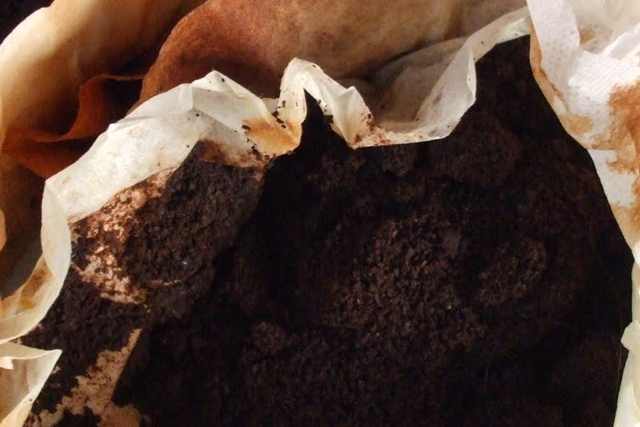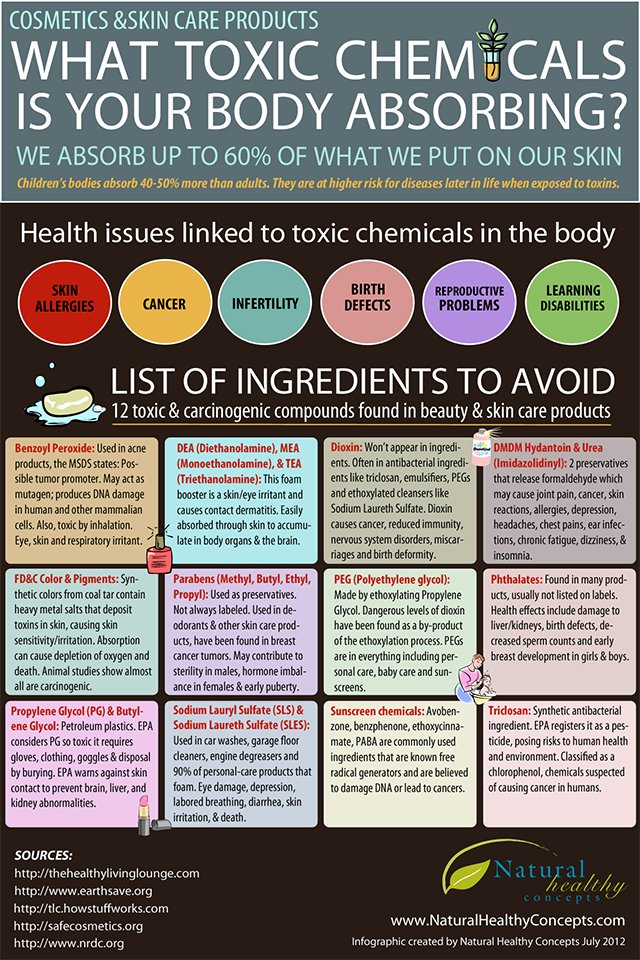Fact: Our skin is our biggest organ. Fact: We absorb up to 60% of what we put on our skin.
Think about that…
Once absorbed, what we put on our skin has to go somewhere. Where, you ask? The bloodstream. Thus, what you put on your body is as important as what you put in your body. Yet, many people slather their skin with products they wouldn’t and couldn’t eat. Without the taste-poison connection, it’s easy to be unaware.
ADVERTISEMENT |
Chemicals are in every type of skincare product, including those intended to keep us safe. We use toxin-laden products from morning til night. Toothpaste, shower gels, shampoos and conditioners. Moisturizer, mousse and makeup. Shaving products. Diaper cream. And the list goes on…
One of the characteristics of a routine is that it becomes second nature. This is the best part of a habit. However, would you consciously eat something called “coal tar dye”? Do “phthalates” sound tasty?
Coal tar dye, found in items such as shampoo, bubble bath and toothpaste, is a carcinogen that can cause headaches, fatigue, nervousness, lack of concentration and nausea in the short term, increased risk of non-Hodgkin’s lymphoma, and multiple myeloma in the long term.
ADVERTISEMENT |
Phthalates found in personal care items such as face creams, cosmetics, hair spray and shampoos have estrogenic properties. As endocrine disruptors, they mimic the body’s hormones and have been shown to cause reproductive and neurological damage. In Europe, they’re banned as a toxic substance.
Oh, and remember how formaldehyde is used to preserve frogs for dissection in school? It’s also a shampoo ingredient, a suspected carcinogen and a neurotoxin.
It’s unlikely that we’re able to eliminate every single toxin from our beauty and hygiene routine, but we can minimize them. Using edible skincare products can help lessen the toxic load. Buy them, make them yourself or use single ingredients in your routine. Here are some common ingredients (that you probably have in your kitchen) and how they can benefit you…
Olive Oil
Great rubbed on sore, dehydrated, or sunburned skin to aid in healing and to reduce inflammation. Massage your kale for salad, and let it sink into your hands. Use it as cuticle oil. (See edible body butter below.)
Oats/Oatmeal
Help to moisturize, soften and protect skin. Used to treat conditions such as eczema, chickenpox, shingles, sores, sunburn and insect bites.
ADVERTISEMENT |
Baking Soda
Mix with water for an easy facial exfoliant, brush your teeth with it, use it in homemade mouthwash.
Coffee (finely ground), Sugar, Salt
Any of these can be mixed with any oil to exfoliate skin.
Coconut Oil
If you spend money anything new, this should be it. It’s my favourite for versatility. It is often added to cosmetics and toiletries because it acts as a preservative and is a good natural cleansing agent. It’s antimicrobial, antifungal and antibacterial. On its own it removes eye makeup, moisturizes lips, face and body, and can be used as a deodorant and personal lubricant. I recommend keeping multiple jars for different purposes. You’ll smell tasty, and your pets (and significant other, perhaps?) might want to lick your skin.
ADVERTISEMENT |
Recipes
I’d intended to share an Avocado Chocolate Face Mask recipe that also doubles as cupcake frosting (I kid you not) from the new book UnDiet by Meghan Telpner. Given that your skin might be feeling a li’l burnt from the first summery days of the season, I swapped it out for this Edible Body Butter. (Note: Cocoa butter, beeswax and essential oil can be found at health food stores and some drug stores.)
Edible Body Butter
Ingredients
– 1/4 cup cocoa butter
– 1 tbsp grated beeswax
– 2 tbsp coconut oil
– 1 tbsp extra virgin olive oil
– 10 drops essential oil of choice
– 4 oz glass jar or another container
Directions
In a double boiler (one medium pot filled with water, with a smaller pot floating inside it), melt together the cocoa butter, beeswax, coconut oil and extra virgin olive oil. Stir in essential oil and quickly pour into a storage container, such as a 4 oz glass jar. Store in cupboard, or, to harden quicker, in the fridge. Depending on the season this blend will be firm or more viscous. The more beeswax used, the more solid it will be.
ADVERTISEMENT |
Coconut Deodorant
Ingredients
– 6 tbsp coconut oil
– 1/4 cup baking soda
– 1/4 cup arrowroot or cornstarch
– Essential oils (optional)
Directions
If coconut oil is solid, put the jar in a vessel of hot water to soften or liquefy it. Mix baking soda and arrowroot or cornstarch together in a medium sized bowl. Mix in coconut oil. Add a few drops of oils if desired. Store in small glass jar or old deodorant container for easy use. Apply with hands.
Edible Body Butter Recipe Excerpted from Undiet: Eat Your Way to Vibrant Health. Copyright © 2013 Meghan Telpner. Published by McClelland & Stewart, a division of Random House of Canada Limited. Reproduced by arrangement with the Publisher. All rights reserved.
ADVERTISEMENT |
Need more proof of the effects of harmful toxins? Check out this infographic from Natural Healthy Concepts…







